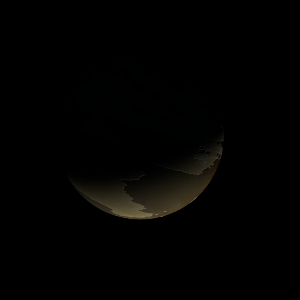|
|
Space Astro
|
Info for exoplanet "Sherxyuan"
| Scientific (actual) data |
|---|
| Name | Kepler-735 b |
| Planet status | Confirmed |
| Radius | 0.263 |
| Orbital period | 11.5152 |
| Discovered | 2016 |
| Updated | 2021-02-05 |
| Tconj | 2455010 |
| Publication | Announced on a website |
| Detection type | Primary Transit |
| Alternate names | 2MASS J18584533+4610200 b, K00942.01, KIC 9512687 b, KOI-942 b, KOI-942.01, WISE J185845.32+461019.8 b |
| Star name | Kepler-735 |
| Right ascension | 284.69° |
| Declination | 46.17° |
| Mag j | 13.94 |
| Mag h | 13.496 |
| Mag k | 13.453 |
| Star distance | 790 |
| Star metallicity | 0.07 |
| Star mass | 0.85 |
| Star radius | 0.8 |
| Star age | 4.37 |
| Star temperature | 5107 |
| Star alternate names | 2MASS J18584533+4610200, KIC 9512687, KOI-942, WISE J185845.32+461019.8 |
| Wikipedia article | Kepler-735 b |
Back
| |
| Fictional info (?) |
|---|
| Suggested name | Sherxyuan |
| Planet type | Cold planet |
| A prominent result is the "great orange spot", a giant storm that is known to have existed for centuries since it was first observed by radar.
Its north and south poles, therefore, lie where most other planets have their equators. |
| Atmosphere | Hydrogen chloride | 89% |
| Ammonia | 9.9% |
| Argon | 0.16% |
| Ozone | 0.044% |
| Atmospheric pressure | 27 bar |
 |
| No known satellites |
| Google search for Sherxyuan |
|
Website by Joachim Michaelis
|
|
|
|